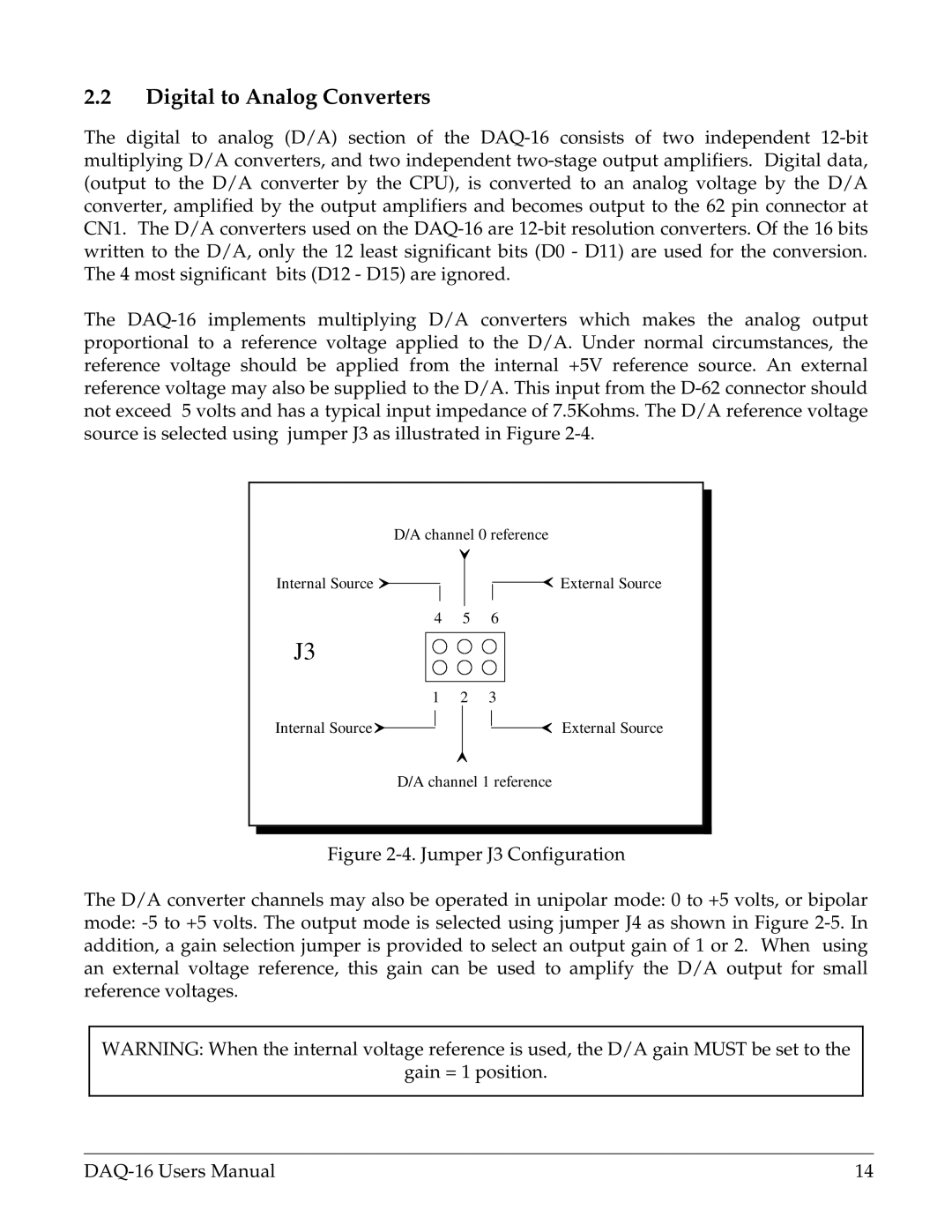
2.2Digital to Analog Converters
The digital to analog (D/A) section of the
The
D/A channel 0 reference
Internal Source ![]()
External Source
4 5 6
J3
1 2 3
Internal Source | External Source |
D/A channel 1 reference
Figure 2-4. Jumper J3 Configuration
The D/A converter channels may also be operated in unipolar mode: 0 to +5 volts, or bipolar
mode: -5 to +5 volts. The output mode is selected using jumper J4 as shown in Figure 2-5. In addition, a gain selection jumper is provided to select an output gain of 1 or 2. When using an external voltage reference, this gain can be used to amplify the D/A output for small reference voltages.
WARNING: When the internal voltage reference is used, the D/A gain MUST be set to the
gain = 1 position.
14 |
